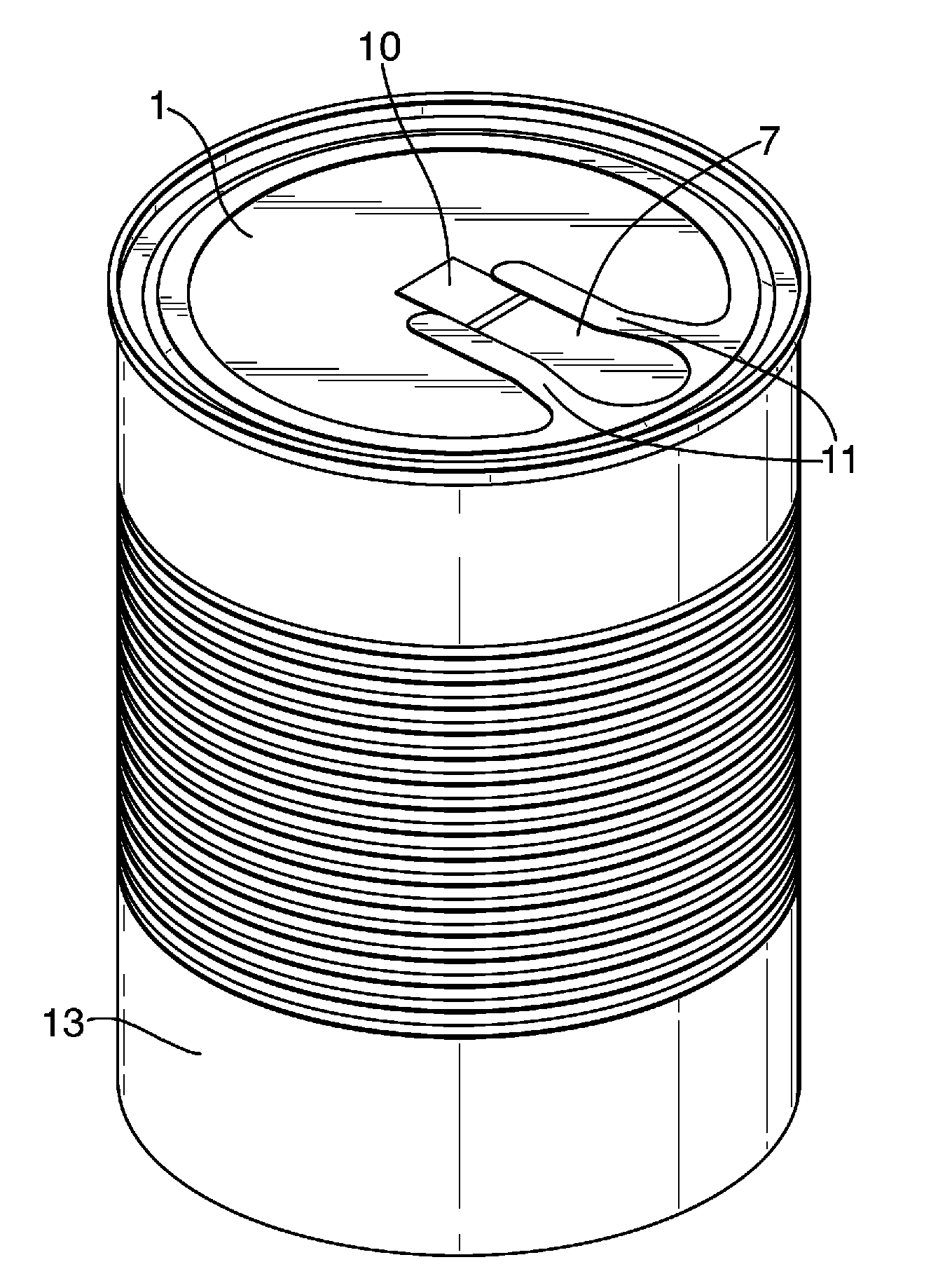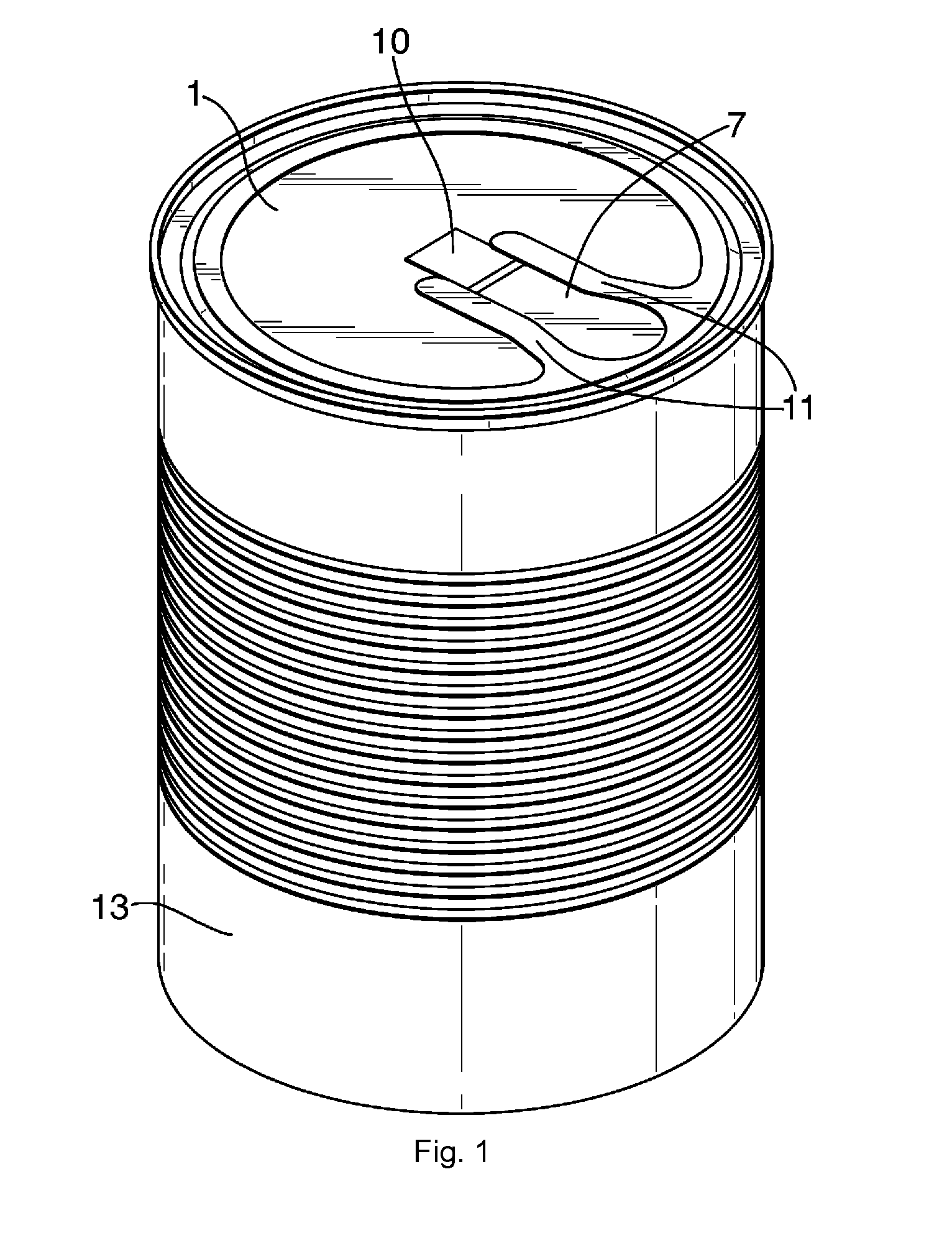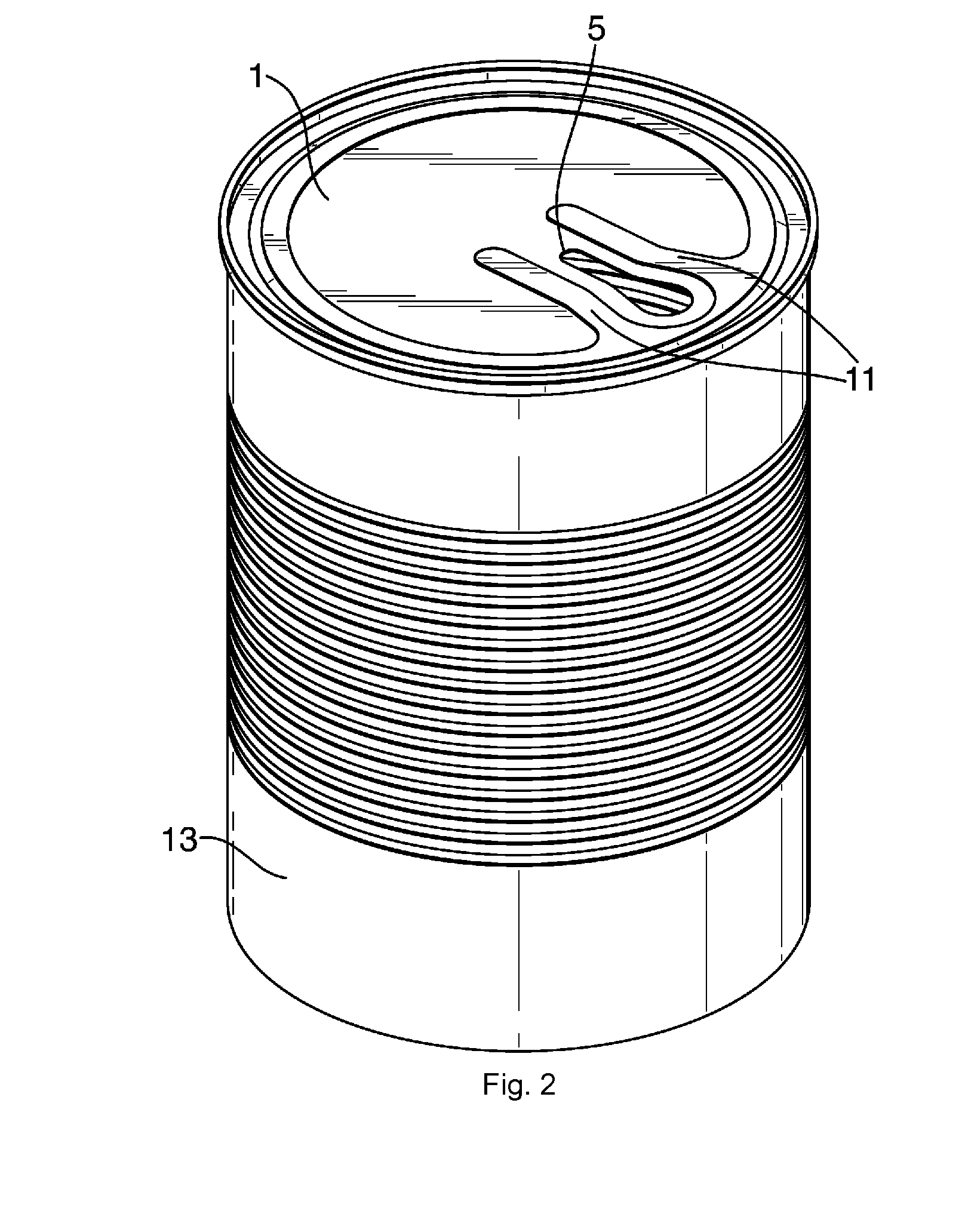Metal containers
a technology of metal containers and containers, applied in the field of metal containers, can solve the problems of reducing the adhesion of metal containers, and reducing the risk of corrosion, so as to improve the adhesion, improve the adhesion, and simplify the manufacturing process
- Summary
- Abstract
- Description
- Claims
- Application Information
AI Technical Summary
Benefits of technology
Problems solved by technology
Method used
Image
Examples
Embodiment Construction
[0042]As illustrated in FIGS. 4, 5 and 6, a can end 1 is formed from a sheet of metal comprising a metal substrate 2 pre-coated with a heat sealable coating 3 containing polypropylene on the outward-facing surface of the metal substrate. An epoxy-based protective coating 4 is provided on the inward-facing surface of the metal substrate 2, the epoxy being a good inhibitor of corrosion. In the embodiment described, the metal substrate 2 is steel plate of 0.17 mm gauge. A dispensing aperture 5 is cut into the can end 1, thereby leaving the periphery of the aperture with a cut edge 6 of exposed bare metal (see FIG. 4). In the embodiment shown in the drawings, a cover element 7 is heat sealed to the outward-facing surface of the can end 1 to form a hermetic seal over the aperture 5. The cover element 7 has a foil metal substrate 8 of aluminium, the inward-facing surface of which includes a heat sealable coating 9 containing polypropylene. The cover element 7 also includes a tab portion 1...
PUM
 Login to View More
Login to View More Abstract
Description
Claims
Application Information
 Login to View More
Login to View More - R&D
- Intellectual Property
- Life Sciences
- Materials
- Tech Scout
- Unparalleled Data Quality
- Higher Quality Content
- 60% Fewer Hallucinations
Browse by: Latest US Patents, China's latest patents, Technical Efficacy Thesaurus, Application Domain, Technology Topic, Popular Technical Reports.
© 2025 PatSnap. All rights reserved.Legal|Privacy policy|Modern Slavery Act Transparency Statement|Sitemap|About US| Contact US: help@patsnap.com



